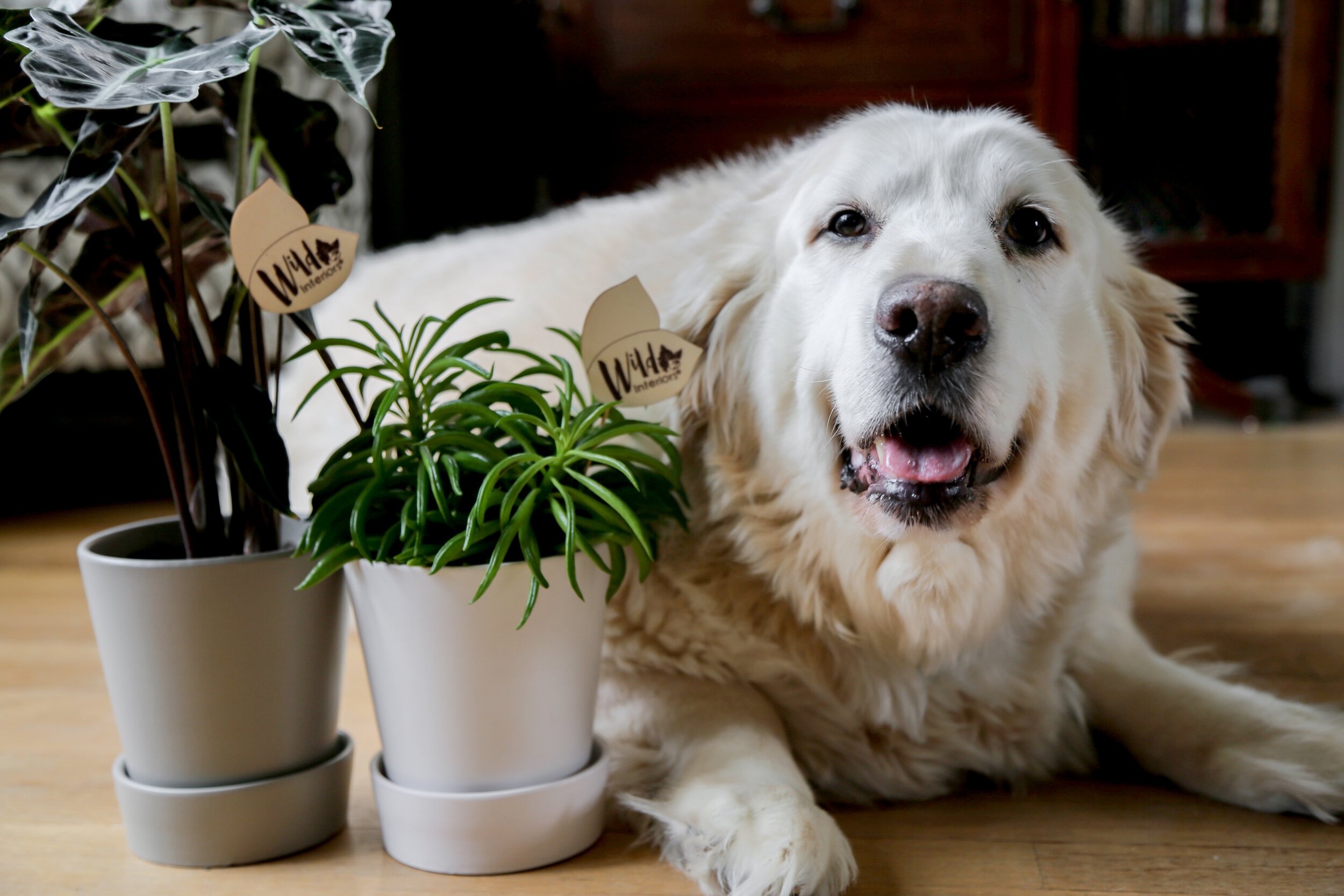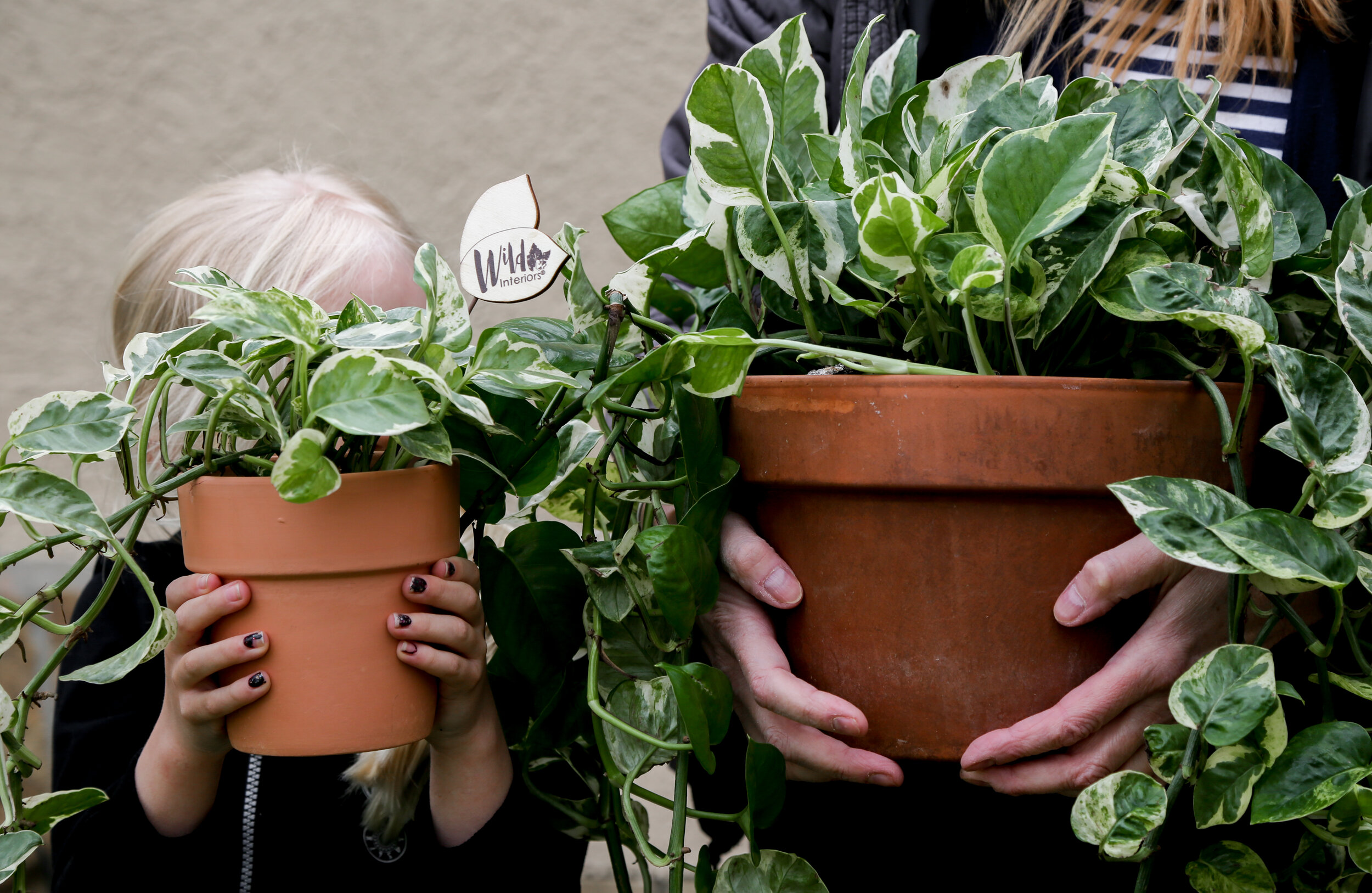Houseplants, Kids, and Pets: How to Save Damaged Plants
Image description: A potted Alocasia Polly plant and Pepperomia Happy Bean succulent next to a friendly dog.
Plants, Kids, and Pets - Oh My!
Raise your hand if you have ever had a plant victimized by your curious little one or clumsy furry friend. Yeah, us too. We know how difficult it can be to protect your plants from the mishaps in your home, but we’re here to reassure you that you’re not alone. We have gathered the most common damage done by pets and kids as well as some advice for you to help prevent another plant misfortune.
Common Damage That Can Happen Because of Pets
Whether it’s your accident-prone pup or curious kitty, your house plants can often take a hit. Some of the most common damage done to plants because of pets are chewing or scratching the plant leaves, knocking the plant over, or digging in the dirt. However, we can’t put all of the blame on the pets.
Common Damage That Can Happen Because of Kids
Kids, often with great intentions, can deal some damage too. Maybe they thought they could help with the watering routine, but instead caused a flood in your plant’s pot. Maybe they decided to rearrange the living decor on their own and depleted the plant of its proper light or knocked it over during the moving process.
Advice For Plant Damage
We get it. It can be frustrating when this happens in your home, but don’t worry. Here are some tips to help you and your plants recover.
Take a deep breath, it will be okay.
Check to see if there is any surface damage to the leaves. If there are rips, bite marks, or broken leaves, and the leaf looks as if it may not fully recover, it is best to remove the leaf. This allows the plant to put its energy into growing new leaves and promotes uniform growth.
Check for over-watering. If the soil is soupy, try and remove any excess water that may be at the base of the pot. An overwatered plant will wilt and could cause root rot. If your plant has been sitting in too much water for too long, check out our blog post for a more in depth look on how to treat root rot.
Check the roots. If the roots are overgrown and competing for room, it may be time for your plant to graduate to a new pot that is 1-2” wider than the original. Take a look at our advice on when you should repot your plant.
Your plant could just be in shock from its accident. Plant shock commonly includes yellow or brown withering leaves, dry stems, and dry leaves. This often happens when a plant’s environment drastically changes. Plant shock can happen overnight or over the course of several days. An important action step for you to take if your plant is in shock is to keep the plant moist, but not over-watered. Make sure there is opportunity for the plant to drain well.
Most importantly, be patient. With proper care and time, your plants can easily make a comeback. Before you know it, they will be flourishing before your eyes and you’ll feel a great sense of accomplishment knowing that you nursed them back to health.
Pet-Friendly Plant Advice
While not every plant accident can be avoided, here are some tips to help you prevent little (and large) paws from creating plant havoc.
Keep your plants up above the level where all the action takes place. Try finding high shelves for your plants to live on or hang plants on hooks to keep them out of reach. There are many pet-friendly and trendy ways to display your plant collections. Take a peek at our ways to maximize your space with vertical decorating for plants.
Be mindful of which plant varieties are around your pets. We have compiled a list of non-toxic pet-friendly plants to have in your home.
Buy your pets their very own plants. Cat or pet grass can serve as a fun and beneficial distraction for pets. Cat grass provides essential vitamins, aids in digestion, satisfies the natural “wild” craving for grass, and most importantly deters them from munching on your houseplants.
Kid Friendly Plant Advice
Image description: A mother and daughter holding plants. Mom holds a large Pothos N’Joy and her daughter holds a smaller Wild Interiors Pothos N’Joy.
Allowing kids to take part in a plant care routine can be a great learning experience for them. Try letting your child get their own plant to take care of with your help and guidance. There are many kid friendly plants that will allow them to learn care and responsibility.
Plants can serve as a fun and interactive educational tool! Try including your young one on watering day or give them a misting bottle to help water without the chance of overwatering. Give them the opportunity to check the soil to see if it is dry or properly watered. Allow them to investigate the roots to see if the plant needs repotting. If your child likes a good challenge, you could teach them about plant propagation. Check out our blogs on propagating spider plants and zz plants! Propagation is a great experiment for kids to watch young plants grow right before their eyes.
Plant care offers many lessons and hands-on learning experiences for kids, but make sure they always include adult assistance.
Plant mishaps happen to the best of us, but there are many ways to be proactive. Whether it’s preventing a cat catastrophe by suspending your plants on hangers, keeping kids from overwatering by giving them the job to mist plants, or avoiding a doggy disaster by elevating plants out of reach, we’ve been there. Remember to try the tips we’ve shared and be patient with your plants. As always, if you have any pet or kid damage questions, send us a message and we will try our best to help get your plant back to living its best life.


